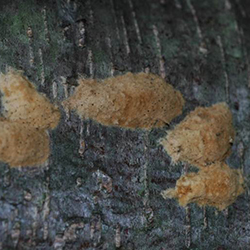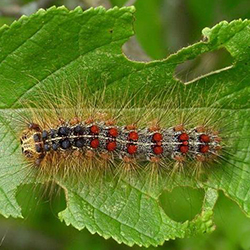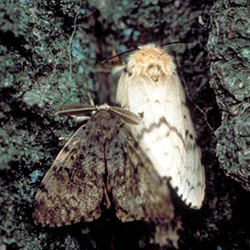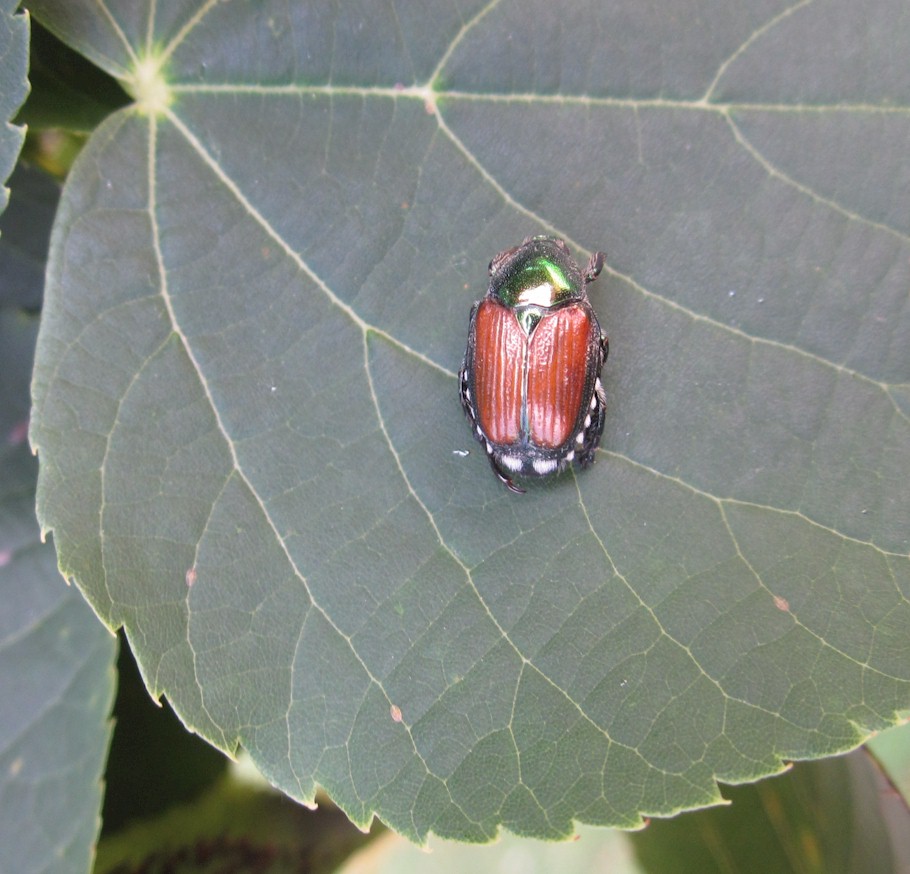INSECT PESTS
Emerald Ash Borer (EAB)
EAB has been confirmed in North Dakota.
More about Emerald Ash Borer
Spongy Moth
The spongy moth (Lymantria dispar) was brought to the U.S. in 1869 to experiment with silk production. Populations soon established and the pest has been expanding in distribution since. Adult females are not able to fly. Spongy moth larvae spin a thread of silk and disperse in the wind. It is estimated that this natural spread would be about 2 miles per year. The actual rate of spread has been much greater due to human aid, primarily by movement of nursery stock and automobiles.
 |  |  |
| Egg Masses:Pennsylvania Department of Conservation and Natural Resources - Forestry Archive | Larva: Bill McNee, Wisconsin Dept of Natural Resources | Adult male and female: John H. Ghent, USDA Forest Service |
Spongy moths are not known to occur in North Dakota. In the past several years, infestations have been found in the Twin Cities area of Minnesota, more recently large numbers of moths have been caught in the arrowhead region. Steps are being taken to slow spongy moth spread. Trees, Christmas trees, shrubs and logs from quarantined areas must be certified before movement. State and federal agencies use pheromone traps to detect outlying populations. Eradication measures are taken if outlying sites are determined to have established spongy moth populations. Since 1993, officials have implemented a “Slow the Spread” program that uses intensive sampling and precise population control techniques. The program is concentrated on a 100 mile wide band bordering the generally infested area. The rate of spread has been about half as fast since implementation of the program. This program has been implemented in the arrowhead region of Minnesota since 2003.
Spongy moths feed on a wide range of trees and shrubs and could be transported on any nursery stock or Christmas trees brought into the state from quarantined areas. Closely inspect and monitor stock received from these areas and ensure shipments are accompanied by a federal certificate or stamp demonstrating compliance.
ADDITIONAL INFORMATION
Japanese beetle

Japanese beetle (Popillia japonica) was first discovered in the United States in New Jersey in 1916. A native of Japan, the beetle occurs in all states east of the Mississippi River. Japanese beetles attack a broad range of host material including nearly 300 species of plants. The adult beetle will feed on field crops, ornamentals, trees, shrubs and garden plants, severely defoliating and skeletonizing the host plants. The larvae will feed on the roots of turf grasses and field crops (especially corn and soybeans) as well as organic matter in the soil, severely damaging golf courses, lawns and pastures. The Japanese beetle is a highly destructive plant pest that can be very difficult and expensive to control.
Japanese beetle adults are about ½ inch long with the male slightly smaller than the female. The insects are metallic green in color with bronze wing covers called elytra. Adults begin to emerge mid-June with peak emergence occurring approximately 3 to 4 weeks after initial emergence. The female beetle will burrow into the soil during the day to lay eggs, laying up to 60 eggs in her 2 month lifespan. Eggs will hatch in about two weeks. Larvae, which are about 1 inch long and cream colored with a brown head, will live in the soil, feeding on plant roots. The insect will overwinter as third instar larvae below the frost line and will pupate and emerge the following spring.

